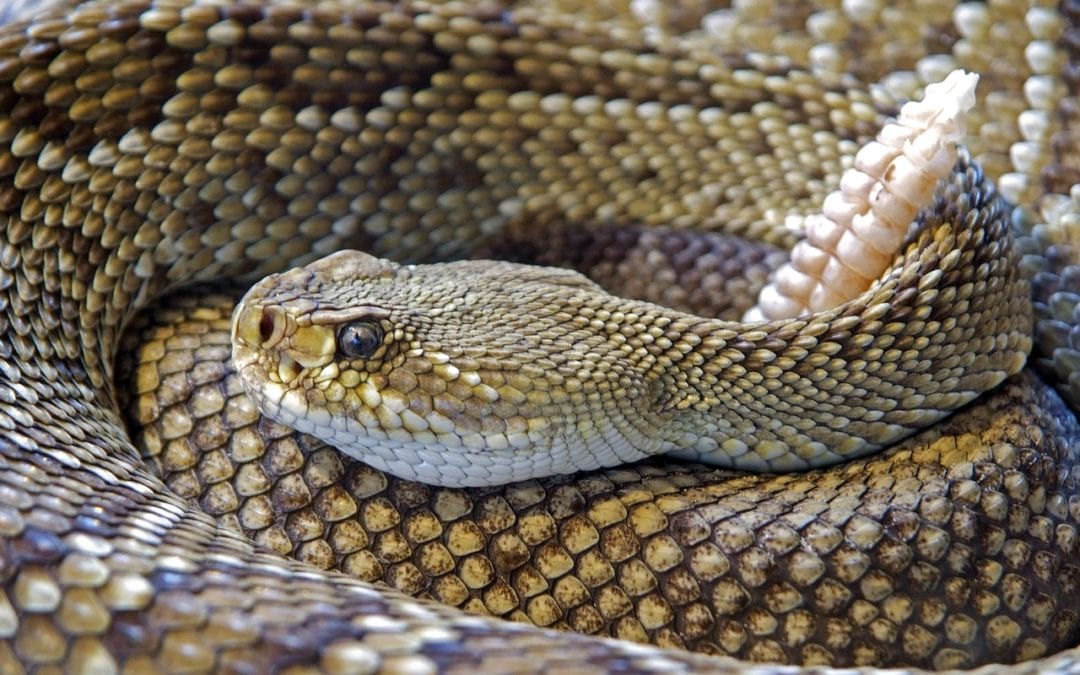Don’t let Fido get fanged!
Every year, the Friends of Douglas County Sheriff’s K-9 Unit hosts a special Rattlesnake Avoidance Clinic to educate dog owners on how to best protect your pooches from this common Colorado canine menace.
The clinic costs $95 and is a perennial sell-out — all proceeds go to support the non-profit Friends of Douglas County Sheriff’s K-9 Unit organization. The clinic ran June 11th-12th, 2022, but if you missed it this year, don’t fret, we’re here to help with this list of 6 Things To Know About Keeping Your Dog Safe from Rattlesnakes.
1) Snakes like to sun themselves.
You might think you’re safe on the hiking trail, but that’s a common area for rattlesnakes to hang out. Since they’re cold blooded, they like to sunbathe, and shadeless areas like rockpiles or the trail itself can attract them. Give them a wide berth, but if you have to step off the trail into the brush, make sure to prod the area in front of you with a long stick because there might be more hanging out in there, too.
2) Avoid the brush.
The upside of the trail is you can see everything, especially a snake. Keep out of the brush, areas with tall grasses — basically anything where you can’t see the ground (also good advice for avoiding ticks!). Rattlesnakes rattle when they’re stressed, but most bites occur when they’ve been surprised, and they may not warn you with a rattle.
3) Leash up.
Not only is there a leash law in Colorado, but it’s even more important to keep Rover tethered on the trail with a short leash. Dogs are most commonly bitten around the face, because they like to investigate everything, so it’s critical not to let them off the leash, where you’re unable to pull them back if they’re in danger.
4) Rattlesnake vaccine is a thing, but it’s not complete immunization.
The science is still murky on it, but there is a company that manufactures a rattlesnake vaccine. More than 30,000 dogs and cats suffer venomous snake bites every year, so if you’re out on the trail a lot, it’s worth asking your vet about the Rattlesnake Vaccine. which might lessen the pain and slow the progression of the venom. BUT, it’s important to note that a snakebite still needs emergency veterinary care, even if your pup’s been vaccinated. Antivenom is still critical.
5) Know the symptoms.
If you’ve forgotten or ignored number 2 above and Spot’s out running around off-trail, you might not see a bite take place, or even know it occurred. So it’s important to know what the symptoms of a bite look like. Keep an eye out for these immediate symptoms:
- Puncture wounds or any bleeding, even inside the mouth
- Any swelling
- Excessive panting and drooling
- Unusual restlessness
- Your dog appearing to be in pain
Later-occurring symptoms over the next several hours include things like:
- Tremors/shivers
- Seizures
- Diarrhea
- Lethargy
- Problems breathing
Get to a vet immediately if any of these occur or if you suspect a bite in any way. It’s better to be safe than sorry!
6) Stay calm and cool if a bite occurs.
You’ll want to keep your dog’s heart rate low to avoid accelerating the flow of the venom into its bloodstream. So, you need to remain calm too. Don’t mess with the bite area, because things like ice or meds for pain can make it worse. If you can, carry your dog back to your car — or walk slowly — and get to the vet immediately.
Getting out in the natural splendor of the beauty of the Centennial State is a major draw for people who live here, and there’s no reason not to share it with your four-legged loved one. Just be smart, stay alert, and be a responsible dog owner (pack out your poop, too!), and you’ll enjoy a rattlesnake-free frolic on the trail.
Have questions?


